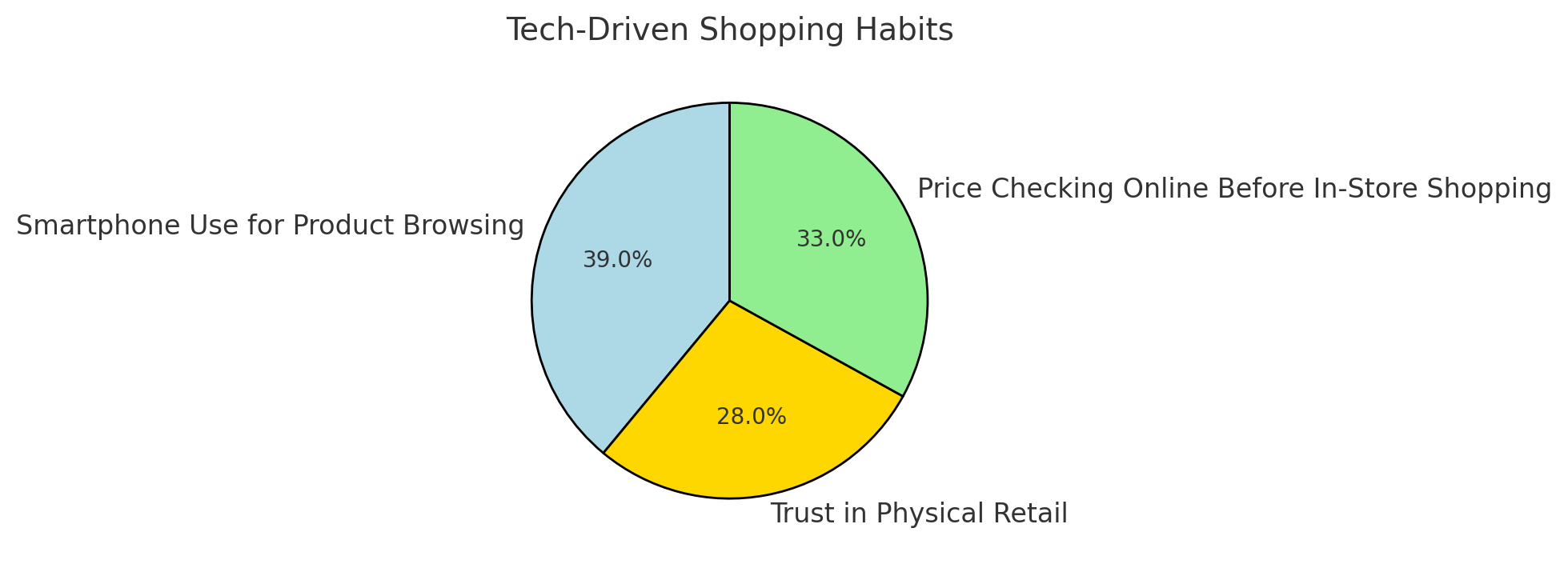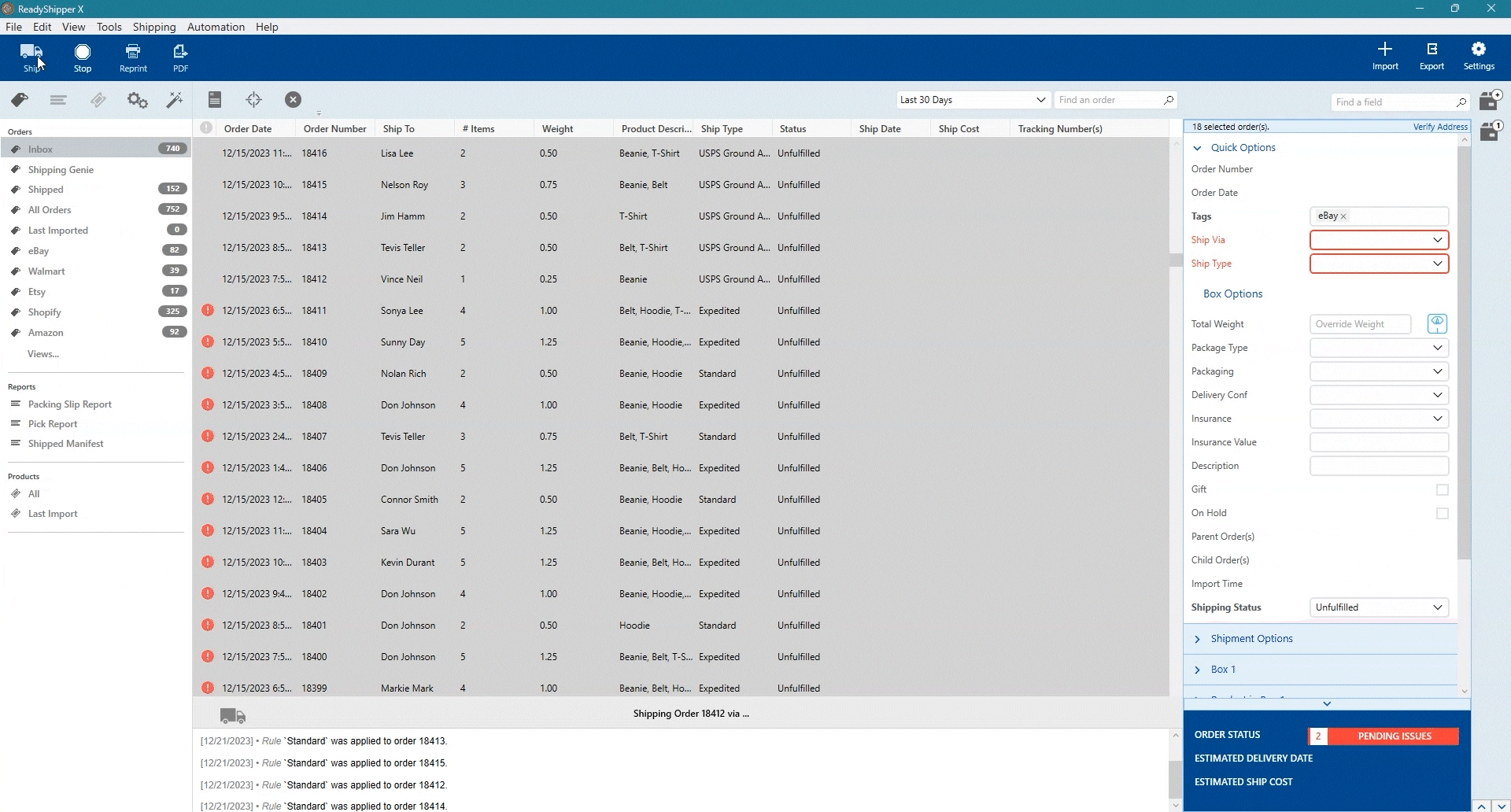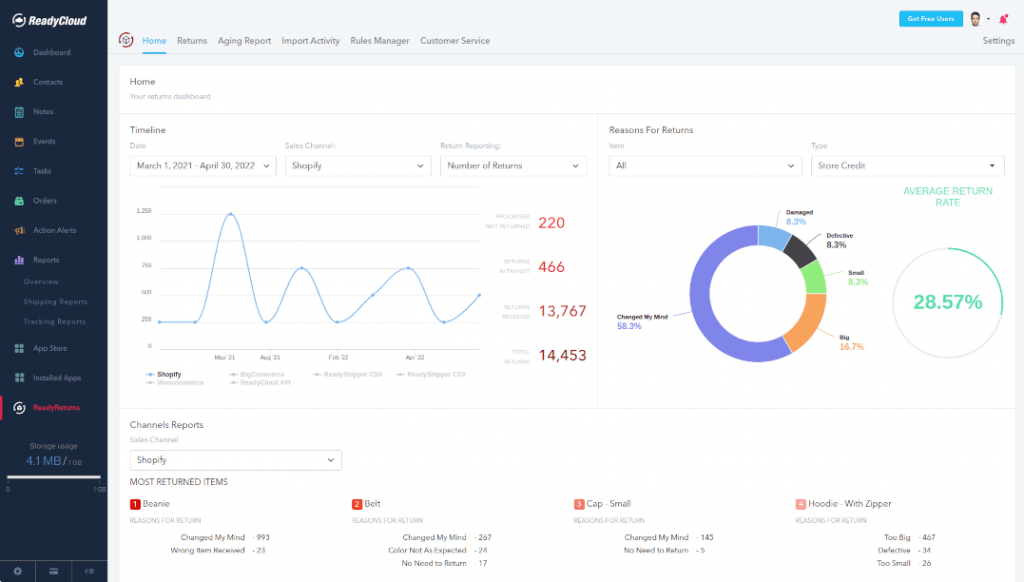Webrooming Statistics All Retailers Need to Know (Updated for 2025)

Having technology at our fingertips creates more options for shoppers than ever before. The capable smartphones of the present day not only make it easy to find and buy things online, but also to compare prices being offered at competing merchants. Coupled with deal-finding apps, digital coupon hubs and marketplaces—the fickle shopper is always going to find the best price no matter what. This process of comparing prices and products between online stores has come to be known as “webrooming.”
How does this method, one that most shoppers use, affect your online store? We’ve compiled a healthy list of the most pertinent webrooming statistics to help online retailers better understand how it impacts their bottom line, and to further drive home the point that a price match policy is must-have – combined with what you charge for shipping and your return policy – and comprises the very bedrock of a successful ecommerce conversion funnel.
Read on to learn more in our Webrooming guide that has been updated for 2025.
What Is Webrooming, and Why Does It Matter in 2025?
Webrooming, the act of researching products online before purchasing them in a physical store, is not new, but its relevance in retail has only grown in recent years. As e-commerce continues to expand, consumers are finding ways to blend the best of online and in-store experiences. Retailers must embrace this trend to capture sales, improve customer satisfaction, and remain competitive.
Who’s Webrooming Anyways?
The simple answer is: Most shoppers are webrooming. According to Retail Perceptions, 88% of consumers take the time to webroom and compare prices between different stores online before making a buying decision. Here’s how it breaks down. 75% of shoppers want to find the lowest price, while 72% just want to compare products and offerings, meanwhile about 71% are simply researching products they want to buy.

Driving home this point is an emerging study that was conducted by Merchant Warehouse. It delivers some interesting webrooming statistics. Namely, about 69% of smartphone users ages 18-36 are webrooming. Meanwhile, 71% of smartphone users ages 37-48 are webrooming. Underscoring just how valuable webrooming is to e-tailers’ bottom lines is a recent Forrest report that predicts more than $1.8 billion in online retail sales will come from webrooming in 2025.
2024 Was the “Year of Webrooming”
Was last year really the “Year of Webrooming”? According to Marketing Land, yes. Nearly 90% of purchases worldwide still occur in an offline capacity, with more than 50% of retailers planning to open new stores in 2017. As brick and mortar remains healthy, a new prospect called “reverse showrooming” is occurring – where shoppers webroom to find a lower price locally and sometimes end up just buying the product online after they have checked it out in person.

Helping us better understand this interesting trend in consumer behavior, the article explains: “… when looking at appliances, men’s apparel, and automotive products, webrooming becomes even more popular, with 58 percent, 49 percent and 40 percent of consumers respectively researching the products online before buying in-store.”
The Modern Shopper’s Journey
In 2025, shoppers expect a flawless connection between their online and in-store shopping experiences. Webrooming provides a hybrid shopping path that meets these expectations, offering the convenience of digital research and the tactile benefits of physical stores.
Here are some updated key insights into webrooming trends:
- Tech-Driven Shopping Habits: Shoppers increasingly use smartphones, voice assistants, and social media for product research. Statista reports that 85% of online shoppers use their phones to browse products before visiting a store.
- Trust in Physical Retail: While e-commerce grows, surveys indicate that 61% of consumers still prefer buying in stores due to immediate product access and the ability to see and feel items.
- Price Sensitivity: Around 72% of consumers stated they check prices online before shopping in-store, underlining the importance of competitive pricing.

Does Webrooming Increase Average Order Value?
Simply put: Yes, and yes. You’ll want to make sure that your store is equipped with all the leading methods you can use to increase average order value first, though. It’s better to think of webrooming like qualified leads that are already nurtured – they are just stopping by your store to consider your pricing, shipping cost and return policy. If you have those three elements strongly in place with a price match pledge as well, you stand to earn the webroomer’s business, and you’ll likely increase order value from any impulse buys or add-ons they see when browsing before checkout.

While studies find that about 85% of shoppers like in-store shopping because they can see and touch the products, many happen to go online after the fact, often when they are in the store itself, to see if there’s a better deal online. Then, intrigued, about 70% of them will webroom that price to find the lowest one. Often, this can lead to them abandoning the purchase locally and buying that product online instead. That’s where online retailers can really cash in by making optimizing their stores for success.
2025 Webrooming Statistics
Here’s a healthy list of statistics on webrooming to help you better understand what you are up against. Something as simple as a price match pledge can eliminate any concerns you might have about losing shoppers to your competitors via webrooming.
- 29% of shoppers desire a price match policy when webrooming (Upstream Commerce)
- 44% of shoppers specifically webroom online during holidays to find lowest price (Reuters)
- 18% of the leading retailers cater to webroomers with a price match policy (eMarketer)
- 45% of shoppers prefer to webroom from a mobile device (PwC)
- 38% use webrooming simply to find the lowest price available (Upstream Commerce)
- 42% of webroomers decided to find a lower price online after shopping locally (RIZ)
- 88% of all consumers will webroom before making a purchase (Retail Wire)
- 75% of shoppers webroom but still think they can get a better price locally (Interactions Marketing)
- 75% of shoppers know that webrooming will deliver the lowest price (Retail Perceptions)
- Zappos defeats webrooming with automated price matches in real-time (Internet Retailer)
- Webrooming will generate more than $1.8 billion in sales in 2017 (Forrester)
- 90% of showroomers have webroomed (Business News Daily)
- 60% of webroomers have showroomed (Business News Daily)
- Amazon is the most popular webrooming site, attracting 48% of webroomers (Harris)
- 36% of webroomers take the best price they find into a brick and mortar store (Shopify)
- 80% of in-store shoppers check online prices before buying (Marketing Land)
Webrooming Statistics by Industry
Webrooming affects all retail sectors, but some industries benefit more than others:
- Electronics: Webrooming is particularly common with high-value items like laptops and smartphones, with 79% of shoppers researching these products online before buying.
- Fashion: Clothing and footwear see a 62% webrooming rate as customers want to confirm sizes and styles.
- Furniture: Large-ticket items like sofas and dining tables are often webroomed, with 57% of buyers visiting stores to inspect materials.

Webrooming vs. Showrooming: A Retail Tug-of-War
Showrooming, the opposite of webrooming, is all about checking out items in-store before deciding to buy them online. While showrooming remains a concern for retailers, webrooming offers unique opportunities:
- Higher Conversion Rates: Shoppers who engage in webrooming are more inclined to finalize their purchases. A 2024 survey found that 70% of webroomers buy within 48 hours of in-store visits.
- Increased Cart Values: In-store purchases often include additional items, with webroomers spending 15-20% more on average compared to online-only shoppers.

How Webrooming Will Boost Retail Sales in 2025
Retailers who cater to webroomers stand to gain significantly. Understanding the webrooming journey enables businesses to align their online presence with in-store experiences.
- Enhanced Research Tools: Offering detailed product information, reviews, and comparison tools on your website empowers shoppers and builds trust. When consumers find the information they need, they’re more likely to visit your store.
- Inventory Transparency: Consumers want to confirm a product’s availability in-store before heading out to shop. Implementing real-time inventory updates ensures customers aren’t disappointed.
- Click-and-Collect Services: Buy-online-pick-up-in-store (BOPIS) services help connect online and in-store shopping, attracting 60% of webroomers, as recent studies reveal.
- In-Store Tech Integration: Retailers using augmented reality (AR), QR codes, and self-checkout kiosks enhance the shopping experience for tech-savvy consumers.
Webrooming During the Holiday Shopping Season
The holiday season is peak time for webrooming, as shoppers search for deals, compare prices, and ensure availability before heading to stores. Here’s how retailers can leverage webrooming to maximize holiday sales:
- Early Engagement: Start your marketing campaigns early, focusing on customers who are already exploring Black Friday and Cyber Monday deals.
- Optimized Mobile Experiences: As webrooming largely happens on mobile devices, make sure your website is optimized for mobile use and simple to navigate.
- Gift Guides and Bundles: Create curated gift guides and exclusive in-store bundles that encourage webroomers to visit physical locations.
Adapting Your Strategy for 2025
To succeed with webroomers in 2025, retailers must embrace strategies that cater to their unique needs. Here’s how:
- Invest in Local SEO: Webroomers often turn to search engines to locate nearby stores. Make sure your business stands out in local searches by optimizing your Google My Business profile and gathering customer reviews.
- Offer Price-Matching Guarantees: To curb showrooming, many retailers have introduced price-matching policies. Showcase these clearly on your website and in-store signage to draw attention.
- Personalized Marketing: Leverage AI tools to provide tailored recommendations and offers based on customers’ browsing history and purchase patterns to personalize their ecommerce experience.
- Staff Training: Train employees to have strong product knowledge and excellent customer service skills to turn webroomers into loyal customers.
Webrooming Predictions for 2025 and Beyond
The future of webrooming will be shaped by advancing technology and changing consumer preferences. Here’s what to expect:
- Increased Role of AI: Virtual shopping assistants will become more sophisticated, guiding webroomers through personalized product suggestions.
- Sustainability Focus: Eco-conscious consumers will use webrooming to identify stores offering sustainable products.
- Expansion of Omnichannel Retail: Retailers will invest heavily in creating unified online and offline shopping experiences.
Ready to Embrace the Webrooming Era?
Webrooming is a powerful trend reshaping retail in 2025. Adapting to the preferences of webroomers helps retailers increase foot traffic, grow sales, and build lasting customer loyalty.
Take action today by ensuring your website is optimized for research, your inventory is transparent, and your in-store experience is second to none.
The Future of Ecommerce is Now
Staying ahead in the ecommerce industry means embracing innovation and anticipating changes before they arrive. The trends shaping 2024 provide valuable insights into what’s next, but the future also brings exciting new possibilities. Businesses that adapt quickly and leverage the right tools will thrive in this dynamic landscape.
Ready for 2025? ReadyCloud Has You Covered!
Success in 2025 starts with the right tools, and ReadyCloud’s suite of solutions is designed to propel your ecommerce business to new heights. With ReadyCloud, you’ll have all your data centralized in one place, offering insights that drive smarter decisions. Take your marketing to the next level with Action Alerts, delivering growth-focused, automated campaigns that keep your customers engaged.
Shipping is easier than ever with ReadyShipper X, a multicarrier solution that simplifies your fulfillment process while saving time and money.

And when it comes to returns, ReadyReturns streamlines the entire process with an automated solution that boosts customer satisfaction and loyalty.

ReadyCloud is more than just a suite of systems—it’s your ticket to thriving in 2025 and beyond!
Start your journey to success today! Learn more and get started here.
Or contact our Sales Department at: 877-818-7447 ext. 1.
Share On:







